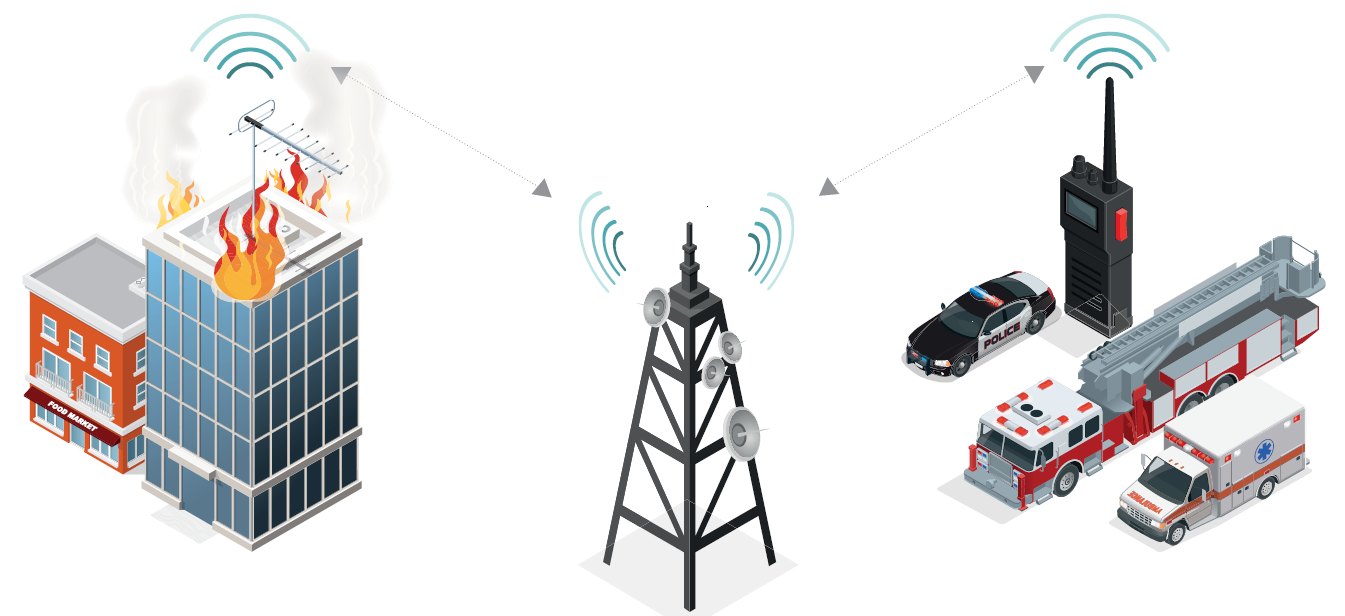Systems that protect Emergency Responders deserve a UL Listing
Why is an Emergency Radio Communication Enhancement System (ERCES) important?
ERCES, also sometimes referred to as BDA or DAS, amplifies radio signal strength in buildings to ensure emergency responders are able to communicate clearly using two-way radios. The National Fire Protection Association (NFPA), International Building Code (IBC), and International Fire Code (IFC) spell out the requirement for sufficient radio signal strength in buildings.
Building owners, architects, engineers, and contractors are responsible for this requirement that protects emergency responders and the people they serve.
What is UL 2524 and where do the code officials stand?
Earlier this week, I had the opportunity to speak with a local code enforcement official about the UL Listing for Bi-Directional Amplifiers (BDA), the control unit of ERCES. Both of us had the same question: since ERCES is a public safety system that integrates with the fire alarm, why aren't more local code officials enforcing the UL Listing?
Underwriters Laboratories published the UL 2524 Standard with the objective of ensuring the safety, integrity, and code compliance of Bi-Directional Amplifiers. UL 2524 first appeared with an Outline of Investigation in December 2017, and Underwriters Laboratories proceeded to create a Standards Technical Panel with key stakeholders including Authorities Having Jurisdiction (AHJs), consumers, government entities, and equipment manufacturers. On October 19, 2018, UL 2524 officially became an ANSI standard.
UL 2524 comprehensively integrates requirements from the International Fire Code, NFPA 1221, NFPA 70, NFPA 1, and NFPA 101. As with all of its public safety equipment listings, Underwriters Laboratories provides independent third party certification of the BDA with the objective of ensuring full code compliance and proper functionality.
Would an AHJ approve a fire alarm system that is not UL Listed? We all know this would not be acceptable. A UL Listing for a public safety system provides assurance that it will function optimally in the event of an emergency. If the Bi-Directional Amplifier of an ERCES is not UL-Listed, the product is supported only by the manufacturer’s claims; the AHJ has no guarantee that this crucial equipment will function properly. UL Listed public safety equipment removes the risk of liability and is therefore essential to all parties involved.
Now that the industry has established a standard for ERCES, UL 2524 is subject to enforcement. With the initial Outline of Investigation initiated merely a year ago, it appears that few AHJs are aware of the new Listing. However, awareness among Local Code Enforcement will inevitably grow with time and education, and the industry can likely expect increased enforcement in the future.
What does National Fire Protection Association (NFPA) say about listed products?
Listings for Life Safety Equipment is a necessity according to NFPA. If we refer back to NFPA 72 (National Fire Alarm and Signaling Code) we know that Life Safety Equipment requires a listing to ensure the integrity of its components:
NFPA 72 2010, 2013, & 2016 Section 10.3.1 states that Equipment Constructed and installed in conformity with this code shall be listed for the purpose for which it is used.
NFPA 72 10.3.1 commentary points to conformance with the listing and manufacturer’s instructions that originated in NEC (National Electric Code)
NEC 70 Section 110.3 B Installation and Use. states that listed or labeled equipment shall be installed and used in accordance with any instructions included in the listing or labeling.
Conclusion
ERCES is considered a Life Safety component of the building system. Would we install a fire alarm system without a proper listing? No. The same standard should be held for ERCES.
As ERCES standards continue to mature, we hope through awareness and education that the industry will arrive at the same conclusion.


